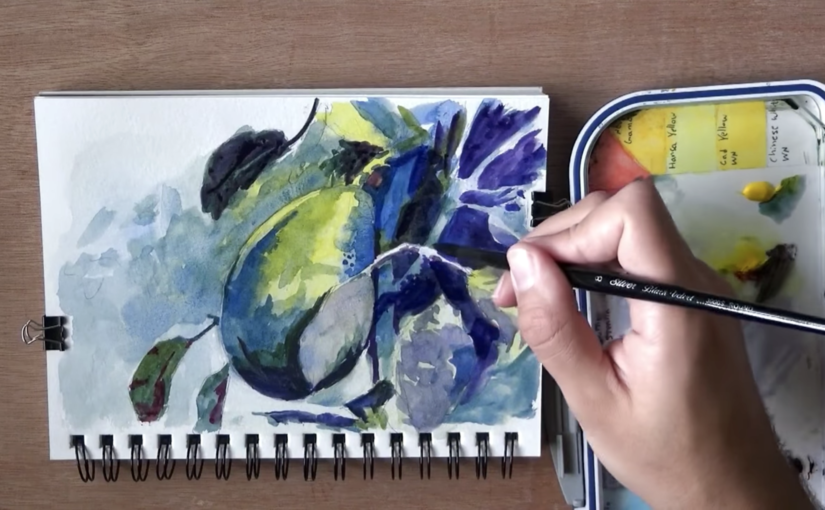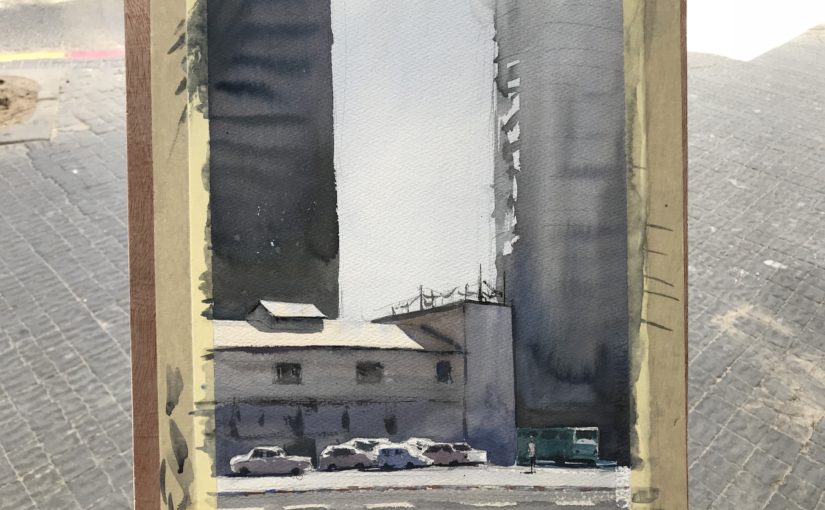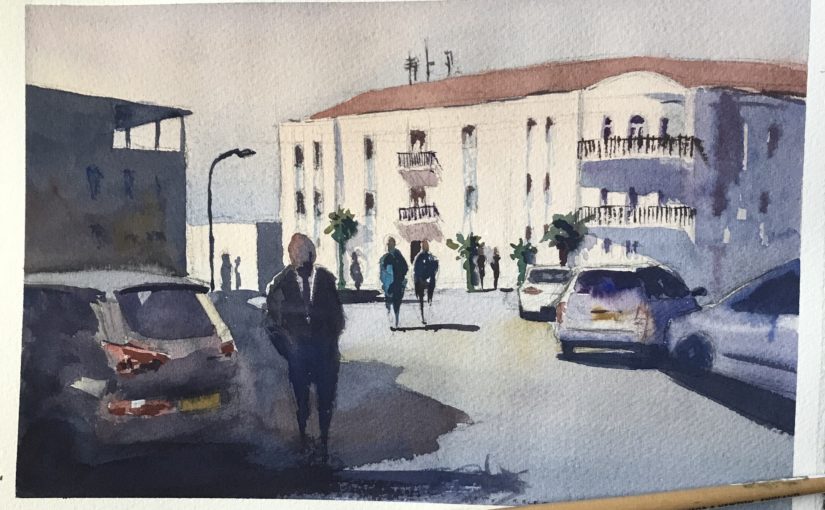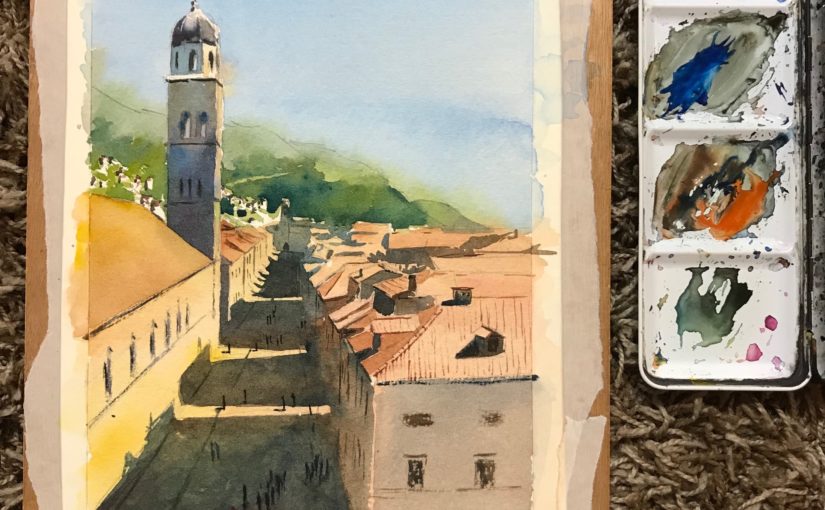Podcast: Play in new window | Download
Today we’ll talk about the artist curse, what it is and how to possibly deal with it.
How I learned about the artist curse
I initially came across this phrase in a video by Mark at Draw Mix Paint channel. Mark is a fantastic oil painter I highly recommend you check out. ESPECIALLY if you do watercolor.
In any case, he described this concept in several of his videos.
The artist curse is when you don’t enjoy your art the same way others do. You don’t see it the same as others see it. You sometimes don’t understand why others like it.
Why I’ve been thinking about the artist curse
Lately I’ve been experiencing more and more of this.
I think I’m a bit of an oddball. I am able to enjoy some of my art, and see the beauty in it. But only to some extent, and only some of the time.
Because I was so lucky to build a following of amazing people on YouTube and Instagram, I receive lots of feedback.
Even ME, as someone who enjoys their art, is constantly blown away by the feedback.
This also happens when I paint outside. Passerby’s comments are many times positive, while I feel lie “I have no idea what I’m doing” haha.
Why the artist curse occurs
I believe there are several reasons for why we (for the most part) simply can’t enjoy our art in the same way others can.
Process – We slowly see our painting come together. During the process, it’s easy to lose track of the vision. It’s easy not to be able to see how this mess in front of us is supposed to turn into a beautiful piece of art.
Others come by and see it for the first time with fresh eyes. They quite literally see it better.
Lack of objectivity – Because we are the artist, the creator, it’s hard being objective about our work, and seeing it for what it is.
This also connects to…
Familiarity – Not being able to “smell ourselves”. It’s hard for us to recognize our own style, strengths and tendencies. We are simply too close to the picture.
Many have commented about how they loved my style, and how it’s really distinctive. But – to this day I don’t really see it. All I can do is create as best as I can. But on the other hand – it does appear to have its own style.
The funny irony
Mark pointed this out, and it made me laugh as I was able to relate.
Usually, the artists who have the most doubts and shyness around their skills, are the ones who make among the most beautiful kind of art.
I would assume this isn’t 100% true, but from what I personally experienced so far it’s darn close to that.
On the other hand, artists who seem to have this blind confidence, also tend to have some series weaknesses in their style, technique or skills.
Living with the curse
There are several solutions to alleviate the artist curse. I suspect that due to the nature of objectivity, it never completely goes away. But you can definitely ease the symptoms.
1. Use second hand impression. Share your are with others in a manner that allows them to be objective. Instagram is great for that.
This way you’ll slowly learn what others respond to. You still won’t be able to necessarily enjoy your art as much as others, but you’ll definitely learn more about how it’s accepted by others.
2. Find OBJECTIVE criteria. Judge your art based on objective criteria and signs. Here are some good examples from the visual art world – “Is my drawing accurate? Is this angle correct? Is this the right value? Does the color express what I wanted it to?”
There you have it! Well, that last one may be a little more subjective haha. But you get the point.
And if you come from a different artistic background – try and find your objective criteria!
3. If you are very shy and unconfident about your art – I would suggest learning to become better at ACCEPTING compliments and taking them at face value (gee, looks like someone DOES like your artwork!).
4. If you feel like you have nothing more to learn, and your work is fabulous, I’d suggest asking for some opinions by others and seeing if they match your beliefs. If they do – mad props!
5. Finally – have fun! Art isn’t perfect. We all express what we want, in the ways we can. Above all I want you to enjoy what you produce (:
And with that being said, time to move into the artist corner!
Artist Corner
Today I talked about John Constable, a renowned British oil painter who lived from 1776 to 1837.
He was a landscape painter who worked in the traditional oil style. Among his best works is “Wivenhoe Park”. This is also the first painting of his that I came across.
John wasn’t financially successful. He gained more popularity after he passed away. His work was embraced in France even more than in the UK.
He mostly painted scenes from the Dedham Vale, the area surrounding his home. It is now known as “Constable Country”.
You can read more about him on Wikipedia: John Constable
And also check out “Wievenhoe Park”
As a side-note, I also recommended Alvaro Castagnet – as an artist who does seem to enjoy his own art like others, with lot’s of confident. Check out his work here: Alvaro Castagnet.
And Here’s where you can find me (:
You can support me on Patreon
Check out my YouTube Channel – Liron Yanconsky
Or ask me questions on Instagram – @LironYanIL or Snapchat – @LironYan3
And this is it. I hope you enjoyed this episode, and I’ll talk to you again real soon!
– Liron





